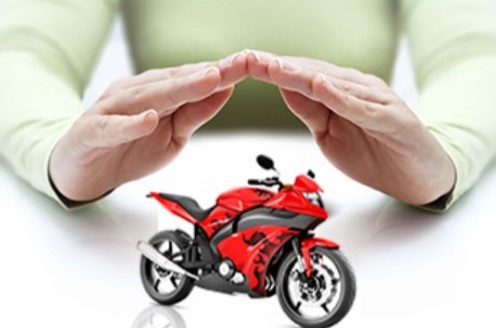If your jogging routine is causing aches and ailments, you need to unlearn the habits that are causing you harm.
by The Editors | editor@themetrognome.in
The city has already started training for the Mumbai Marathon that will take place in early January 2014, and the early morning hours are witness to scores of joggers and runners putting themselves through training. But there are several who give up their training mid-way, because of injury or fatigue.
While some amount of fatigue is expected, due to the muscles toning up and the body reacting to high periods of intense stress, what most people don’t realise is that they may actually be putting their bodies to risk through wrong running practices. Here’s how you can do yourself more harm than good if you’re jogging or running wrong:
 – Running too fast: Most people are under the impression that punishing the body leads to faster, better results. So they set unrealistic goals to meet them, with the result that they are running too fast. When you start a new routine, take it slow. Run at a certain speed in terms of minutes, not kilometres. Then gradually increase the time, while maintaining the speed.
– Running too fast: Most people are under the impression that punishing the body leads to faster, better results. So they set unrealistic goals to meet them, with the result that they are running too fast. When you start a new routine, take it slow. Run at a certain speed in terms of minutes, not kilometres. Then gradually increase the time, while maintaining the speed.
– Running too slow: Some people are unable to run very fast, so they decide to jog instead. However, jogging is trickier than running – it should not be too slow and not too fast. If you jog very slowly, you put immense pressure on your knees and ankles to support your weight longer than necessary. Time yourself when you jog – jog on a treadmill and set the speed to one which is too fast for a walk but too slow to run.
– Wrong running gear: This is a no-brainer, but a lot of people get this wrong. Merely investing in swanky new shoes is not enough. Your running shoes should support your heel, provide good cushioning to your toes, and absorb shock. Avoid soles that are thin, even if the shoes are comfortable. Also avoid soles that are inflexible and hard, as these will not let your instep curl when you run, and cause spasms. Similarly, wear loose cotton clothing when you run and stay away from synthetic fabrics.
– Not hydrating enough: It is crucial to keep drinking water or mineral replenishing fluids before, during and after your run. Not keeping the body well hydrated will result in dehydration and cramping. In some cases, it might even lead to heart attacks. Keep sipping water even when you’re running on a treadmill in an air-conditioned gym.
– Not stretching before and after: Stretching the body is crucial, both before and after your run. If you don’t stretch adequately, your  muscles will not be warmed up enough for a heavy bout of running. Stretching revs up the blood circulation, prepares muscles for activity, even prepares your lungs for the work ahead. Do on-the-spot jogging and stretching exercises for your calves, thighs, hamstrings, ankles and back. Stretch for at least 10 minutes before you begin, and 10 minutes after your run to prevent cramping. Skipping is also recommended.
muscles will not be warmed up enough for a heavy bout of running. Stretching revs up the blood circulation, prepares muscles for activity, even prepares your lungs for the work ahead. Do on-the-spot jogging and stretching exercises for your calves, thighs, hamstrings, ankles and back. Stretch for at least 10 minutes before you begin, and 10 minutes after your run to prevent cramping. Skipping is also recommended.
– Running on an injury: The initial days of running will cause some amount of muscle soreness as your body adjusts to the exercise. However, as you progress, the soreness should gradually fade. If it doesn’t, you’re either pushing your body beyond its limits, or you’ve suffered an internal injury. If you notice swelling and pain, ice the area and stop running till the injury has healed. If you’ve been cramping, it is possible that your posture and intensity is wrong. If possible, get the help of an expert to minimise damage while running.
– Not exercising apart from running: While jogging and running are great cardio workouts, you still need to put in strength training to build your core and up your stamina. Follow up your run with 20 minutes of strength exercises to build muscle and spinal strength. On the days that you give yourself a break from running, try light cycling and brisk walking.
– Following an improper diet: Most people run to lose weight, so they decide to supplement their efforts by completely cutting out certain foods or eating very less. A good diet is key to a good running regime. Get the help of a nutritionist to chart out an ideal diet plan as per your age, dietary requirement and overall health condition. Munch on a banana or a handful of nuts before you begin your run, and have a hot, nutritious meal after your run.
– Ignoring health concerns: Some people are so intent on fitness, they ignore their own bodies’ capacity for exercise. If you are a heart patient, you should be running only on the advice of your doctor. Ditto for those with breathing ailments, DVT, back problems and diabetes. Instead of running, try on-the-spot marching or brisk walking on the treadmill.
(Pictures courtesy www.mid-day.com, reviews.in.88db.com, www.123rf.com)





My partner and I stumbled over here by a different page
and thought I may as well check things out. I like what I
see so now i’m following you. Look forward to exploring your web page yet again.